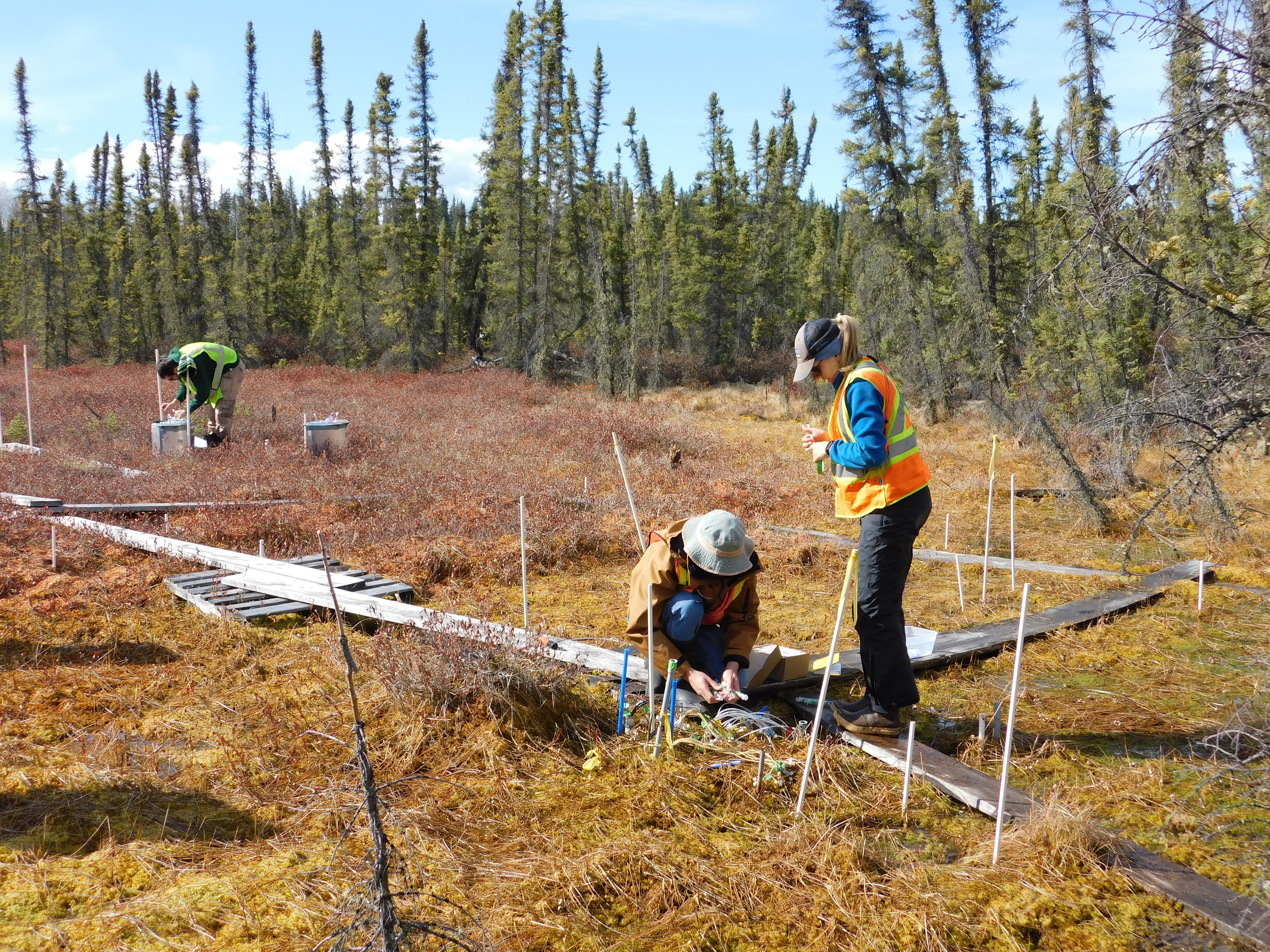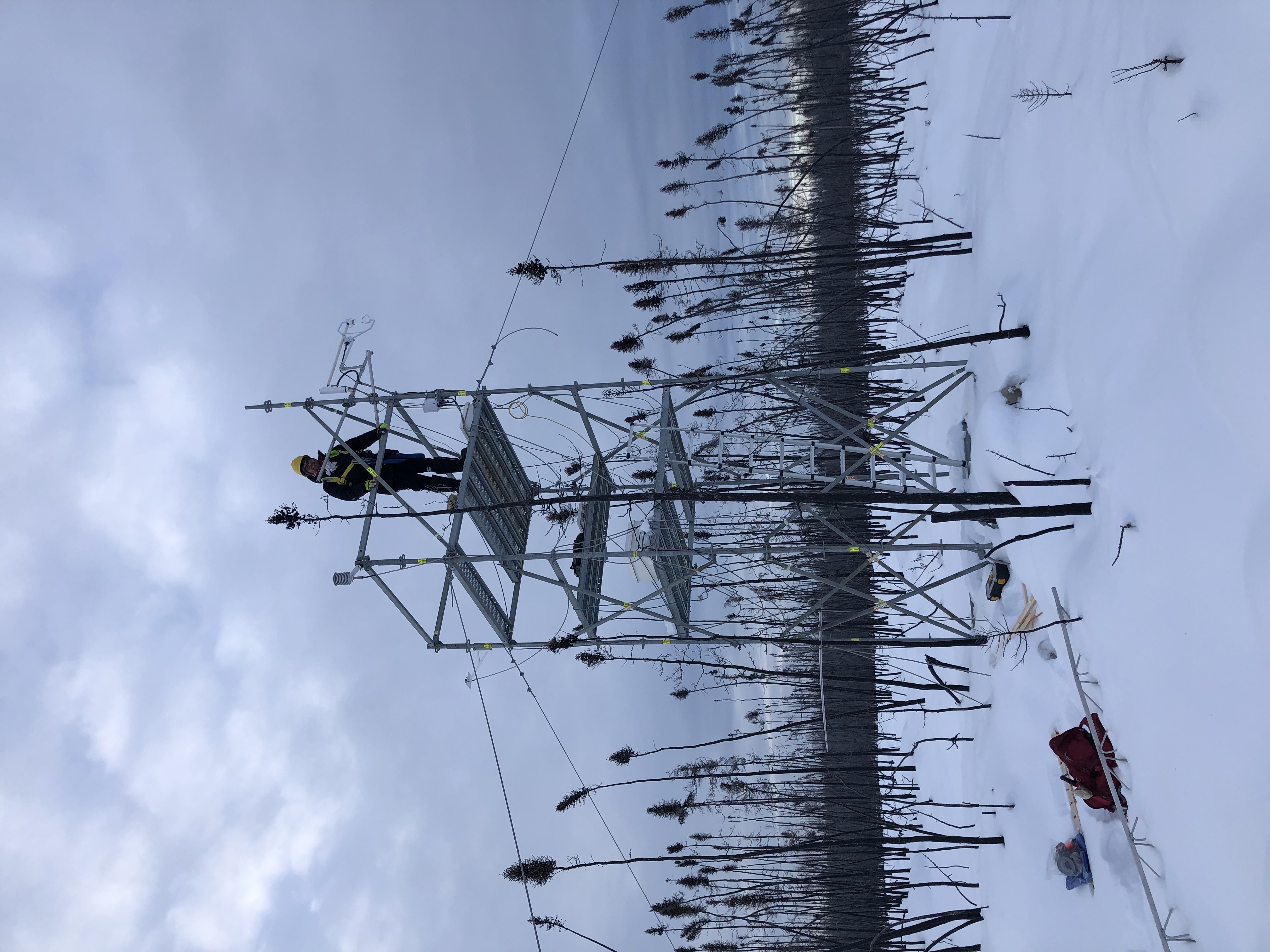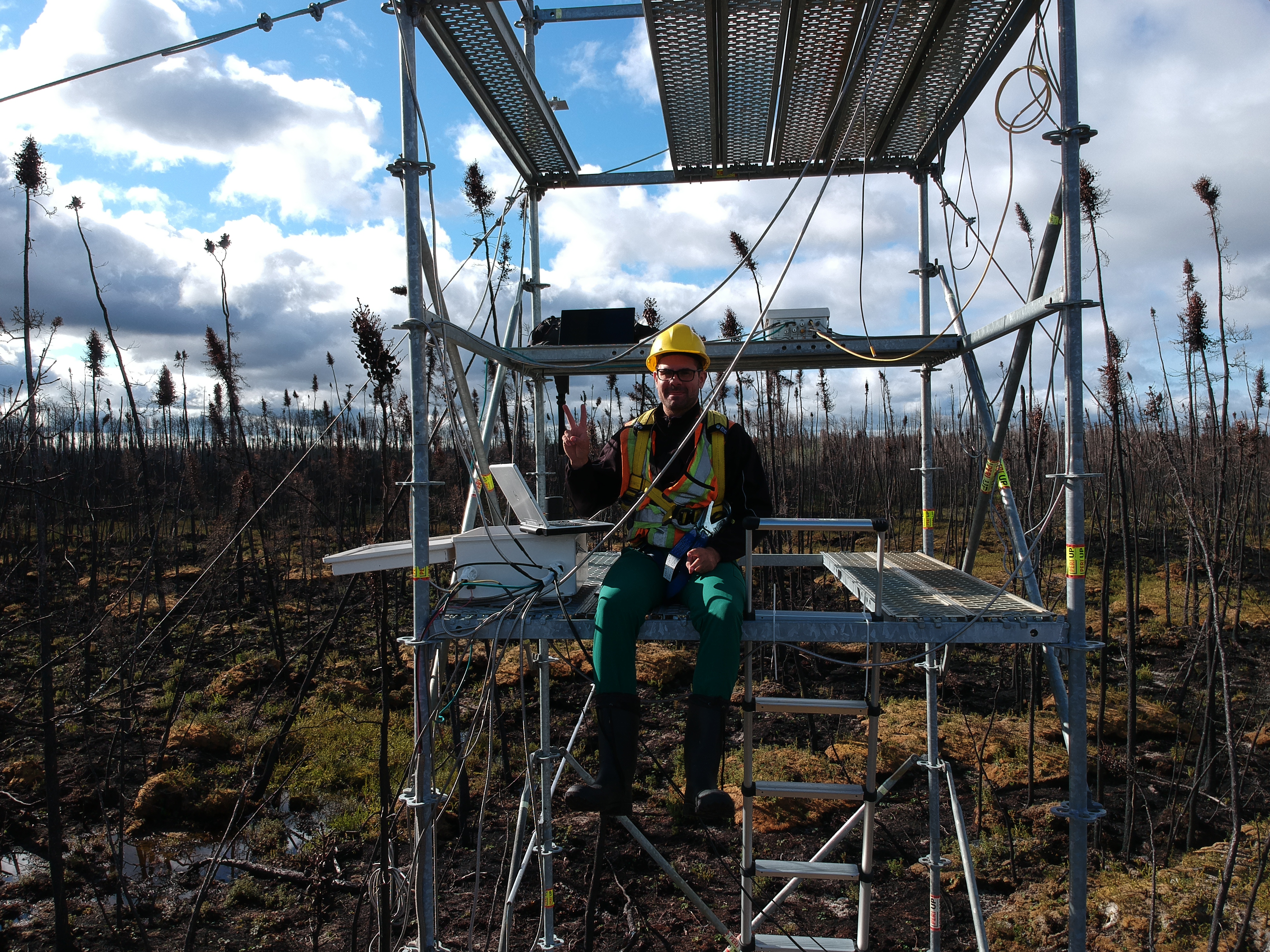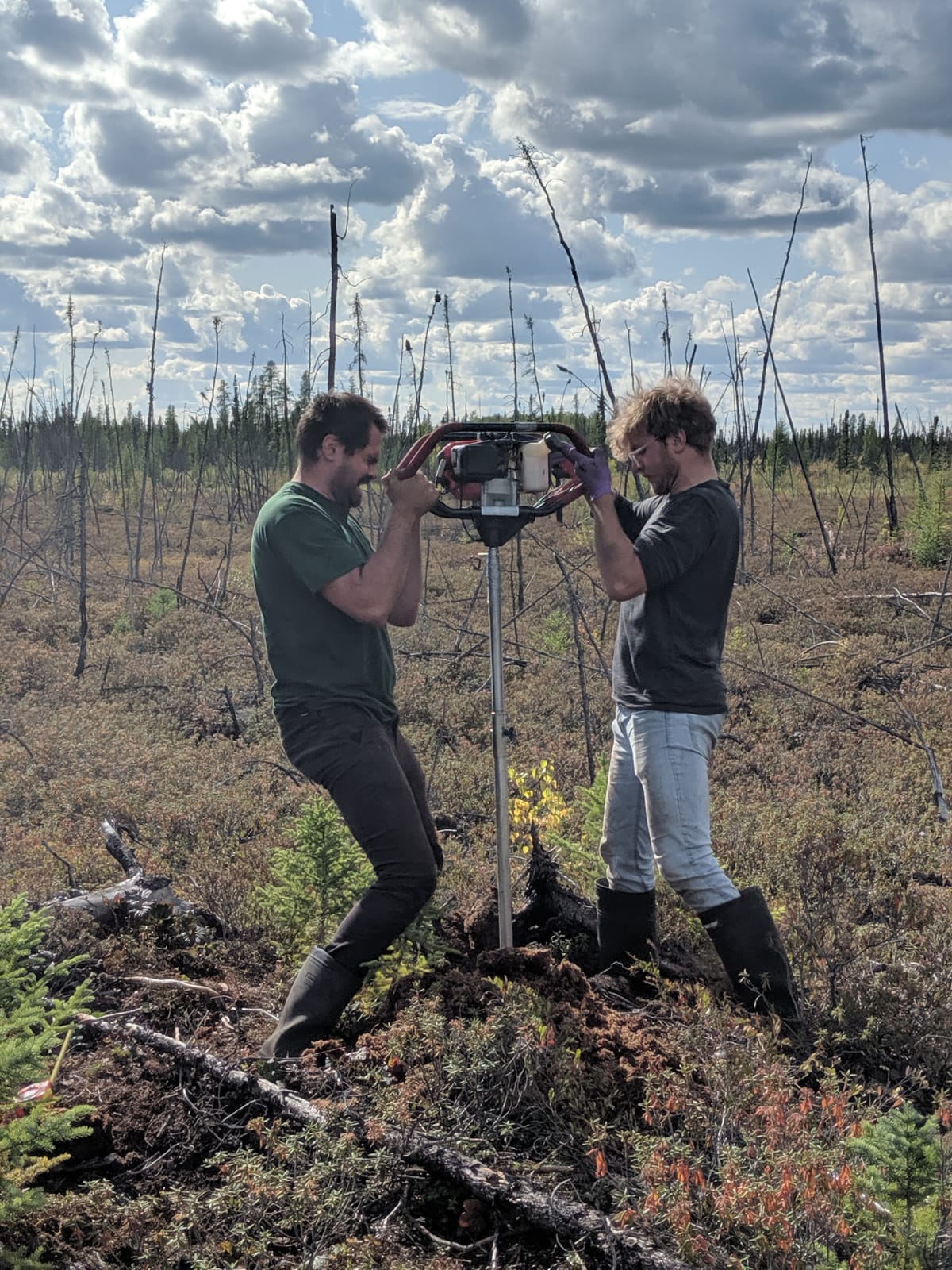Uncovering the true scale of greenhouse gas emissions from Canada’s peatlands
Peatland regions cover much of northern Canada with mounds of vegetation, pools of stagnant water, sparse coniferous forests and ribbons of colourful mosses, shrubs, flowers and grasses.
Peatlands have many names, including bogs, fens, marshes and swamps, and they are a primary source of peat, a type of dark, moist soil that appears almost like chocolate cake and is formed by partially decomposed plants and environmental conditions unique to some wetlands. They are most common in the northern hemisphere, and globally, they store twice as much carbon as all of the world’s forests.
But scientists warn that due to climate change, these beautiful and somewhat otherworldly places have begun to transform from carbon reservoirs into significant sources of greenhouse gas emissions. As warming escalates, permafrost thaw, water loss and forest fires disturb peatlands, releasing gases that have accumulated in the soil for millennia. Human disturbances of peatland areas, whether for extraction of oil, minerals or the peat itself, amplify the problem. Globally, they could in the future emit as much as a large industrial nation.
David Olefeldt, an associate professor in the Faculty of Agriculture, Life and Environmental Sciences, wants to know just how much these areas currently contribute to global greenhouse gas emissions, and how much we can expect them to release as climate change worsens. He has spent the last 10 years monitoring peatland areas in the Taiga Plains Ecozone located in Northern Alberta and the Northwest Territories.
“In order to understand the current carbon balance of these areas, and project the future carbon balance, we need to understand all of the different components of the peatland landscape,” Olefeldt said. “You can’t treat peatlands as one mass—they vary dramatically by region. Now we are putting together the last puzzle pieces.”

Field work photo taken at Lutose, Alberta. Photo of Lauren Thompson and Christopher Schulze, members of the research team, and Guillermo Hernandez-Ramirez. Photo by David Olefeldt.
Northern Alberta and the Northwest Territories contain the third largest peatland region in the northern hemisphere, and it’s warming up faster than many other peatlands in the world.
“It’s also an area where we have an intensifying wildfire regime, because it’s a relatively dry peatland region. There’s a strong interplay of disturbances between warming, thaw and fire that we don’t have in other regions,” Olefeldt said.
These unique features drew Olefeldt to the Taiga Plains. Now Olefeldt’s team are sifting through years of data from their field work, and some unexpected stories are emerging.
“One interesting finding is that if we compare to research out of Alaska or northern Scandinavia, they found permafrost thaw leads to rapid losses of carbon, but our evidence suggest slower carbon losses,” Olefeldt said. “This area does not seem to be as vulnerable as other peatland regions.”

Peatland in the winter time. Photo by Renae Shewan.
He thinks the difference could be due to the unique climate history of the Taiga Plains. For thousands of years, the area did not have permafrost. Somewhere between 4000-2000 years ago, the climate cooled, creating the right conditions for the soil to freeze.
“Most of the carbon stored used to be stored under non-permafrost conditions and is now returning to it, whereas in other areas, the peat has always been permafrost-held and now is transitioning into non-permafrost conditions for the first time.”
Forest fires especially troublesome in peatlands
Although emissions from permafrost thaw may be less extreme in the Taiga Plains than in other regions, forest fires in the area pose a constant threat during the summer months.
Christopher Schulze, a PhD student in Olefeldt’s group, knows Taiga Plains peatlands well. He’s spent the past four years doing field work up north, fending off clouds of mosquitoes, lugging 12-volt batteries to and fro the eddy covariance towers which monitor carbon emissions from the soil and, occasionally, lying on the cushions of moss that blanket much peatland terrain.

Christopher Schulze takes a break for a rest on the eddy covariance tower. Photo by David Olefeldt.
His research explores how the region’s frequent wildfires upset the carbon balance of peatlands.
“In 2019 we had a unique opportunity to put up eddy covariance systems very quickly after a wildfire,” Schulze said. “We saw the wildfire very close to a site we had already established in the past. It was a perfect opportunity, because no one so far has measured the carbon dioxide exchange in these ecosystems directly after wildfire.”
The research team also compared information from the 2019 wildfire with measurements taken from the site of a 2007 peatland wildfire.
Looking over the data from both fires, Schulze says the long-term consequences from these events look severe.
“Over roughly 15 years, these peatlands will emit almost the same amount of carbon dioxide after the wildfire as they do in the actual wildfire,” Schulze said. “This is not the case for forests which become sinks for carbon dioxide already in the first few years after a fire, for example.”

Christopher Schulze and Erik Umbach remove a core sample from the peatland. Photo by Lauren Thompson.
Schulze thinks that the reason emissions continue for so long after the fire is that peatland ecosystems recover slowly. Carbon-sequestering vegetation crawls back to life in the nutrient-poor soil. The result is forest fires that may dump double—or more than double—the amount of greenhouse gases into the atmosphere.
Protecting peatlands from industry requires strong arguments
Getting to the point where humans no longer disturb peatlands will require diplomacy, according to Olefeldt.
“The economic gains that industry receives through mining or oil and gas extraction in Canada’s peatlands are so great that even if you put a carbon price on them, that is not going to in itself deter further development of these resources,” he said. “You need to use other arguments as well: contiguous areas or boreal landscape for animals and biodiversity, and traditional use of peatlands. Those are, in my mind, stronger arguments for conservation than the carbon side of it.”
That’s one reason why Olefeldt has been collaborating with the Dene Tha’ First Nation, who want to establish an Indigenous protected conservation area around Mbehcho lake in northern Alberta.
“They have concerns about water quality, which is harmed when peatlands get disturbed, and for the fish living in the water, and about their continued ability to hunt. They want to make sure their landscape can sustain populations of caribou and moose going forward. These questions fit in very well with research I’ve already been doing in the area,” Olefeldt said.
Next up for the research team is to begin investigating emissions from fens, peatlands which are notoriously difficult to study because they are so waterlogged. Fens account for 20 to 30 per cent of the peatland landscape in the Taiga Plains, and Olefeldt expects they may be a source of high methane emissions.
“We’ve saved these for last because they’re so hard to study,” Olefeldt said. “But it’s time to bite the bullet. The more we know about these landscapes, the better we understand the full scale of Canada’s contributions to climate change.”
David Olefeldt is a member of the Sustainability Council’s Affiliate Network. Christopher Schulze participated in the Sustainability Scholars program.